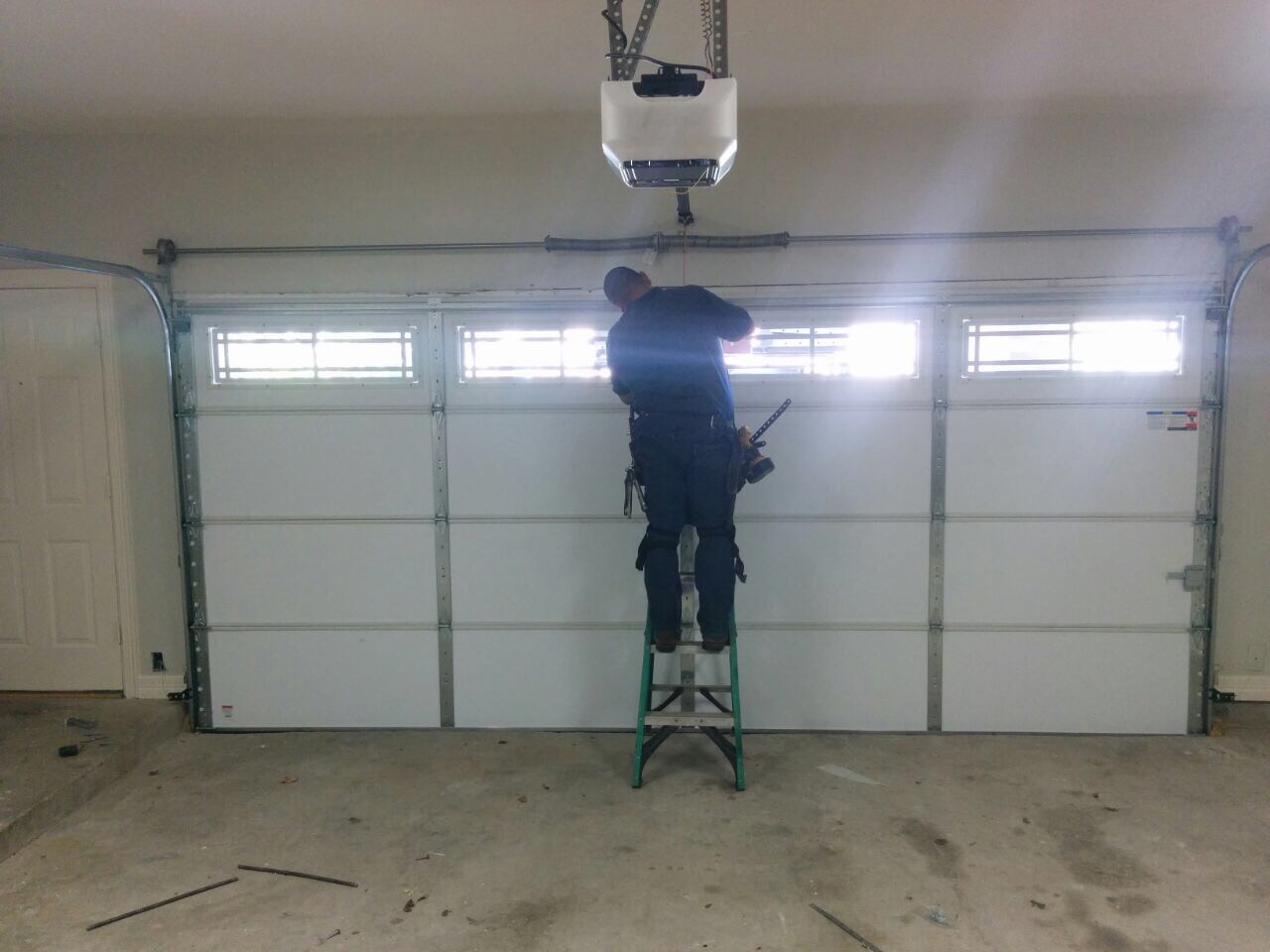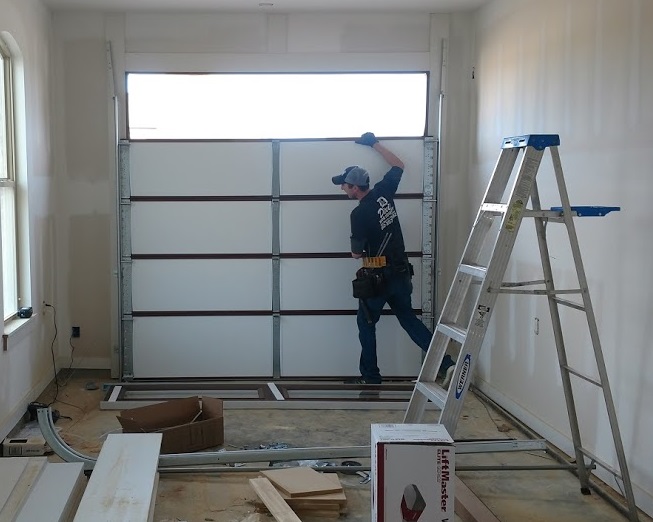Usual Garage Door Troubles and Exactly How to Deal with Them
Garage doors are crucial for both safety and ease, yet they often present a range of typical issues that can discourage property owners. Issues such as extreme sound during operation, doors that fall short to open up or shut, misaligned tracks, and malfunctioning remotes can develop without caution. While some concerns might appear uncomplicated to resolve, others might need a much more nuanced understanding of garage door auto mechanics. Addressing these troubles successfully not just improves capability however likewise prolongs the life of the door. One might question what actions are essential to deal with these obstacles effectively.
Noisy Garage Door Operation
A loud garage door procedure can be a substantial source of annoyance for homeowners, frequently indicating underlying mechanical concerns. Such disturbances may stem from different causes, including damaged rollers, loose equipment, or inadequate lubrication. Determining the source of the noise is vital for effective resolution.
Over time, these parts can degrade, leading to grinding or squealing sounds as the door steps. Additionally, loosened screws or screws in the door mechanism can develop rattling noises during procedure.
Another contributing factor is poor lubrication of the door's moving parts. Using a high-grade lubricant to the tracks, springs, and rollers can significantly lessen friction and noise. Homeowners must execute this upkeep occasionally to maintain ideal performance.
Lastly, the garage door opener may likewise produce noise because of its age or mechanical concerns. If the sound continues in spite of resolving other factors, seeking advice from a specialist for an extensive evaluation and prospective fixing may be required.
Door Won't Open Up or Shut
Experiencing a garage door that will not open up or shut can be exceptionally irritating and frequently signifies a malfunction within the system. A number of elements can add to this problem, and determining the origin is necessary for reliable resolution.

Next, evaluate the safety and security sensors located at the base of the door. These sensors can come to be misaligned or blocked by particles, preventing the door from running appropriately. Tidy the sensors with a soft fabric and guarantee they are straightened.
In addition, the garage door's inner elements should be evaluated. Problems such as a busted springtime, damaged rollers, or a harmed opener can restrain movement. If any elements show up to be damaged, it might be advisable to seek advice from an expert for repairs.
Misaligned Tracks
(Leading Experts)Misaligned tracks can badly disrupt the smooth procedure of a garage door, leading to functional failures such as unequal activity or total immobilization. This concern usually develops as a result of a selection of elements, including damage, unexpected impacts, or incorrect installment. When the tracks are misaligned, the rollers can stagnate openly, which not only strains the motor yet likewise presents safety dangers.
To determine misalignment, aesthetically inspect the tracks for spaces or uneven spacing. If you notice any type of disparities, it is critical to resolve the issue immediately - garage door service. Begin by loosening the screws that safeguard the track to the wall, permitting changes. Carefully touch the track back right into its original site correct setting using a rubber mallet or a comparable device, guaranteeing it is straight and level.
Regular maintenance, including cleaning the tracks and making certain rollers are in great problem, can avoid future misalignments. By dealing with misaligned tracks without delay, you can restore the performance of your garage door and boost its durability.
Broken Springs
Amongst the different components of a garage door system, broken springs are among one of the most common issues that can dramatically restrain its performance. Garage door springtimes are crucial for stabilizing the weight of the door, allowing for smooth opening and closing. When a springtime breaks, it can result in a door that is tough to run or, in many cases, entirely inoperable.
There are 2 primary kinds of springs: torsion springtimes, which are mounted over the door, and expansion springtimes, found on either side. Indicators of a broken spring consist of a door that will not open, a noticeable void in the springtime, or a loud sound throughout procedure. Attempting to run a garage door with a damaged springtime can cause additional damages to the door or the opener.
Repairing broken springs is not a do it yourself job; it requires specialized tools and knowledge due to the high stress involved. It is a good idea to consult an expert specialist who can securely change the springtimes and make certain the door is effectively balanced. Normal maintenance and inspections can help prevent springtime failures and extend the lifespan of the garage door system.
Remote Issues

If the remote still stops working to operate, check the garage door opener to make certain that its sensing units are clean and unhampered. Dirt, particles, or misalignment might impede the signal transmission in between the remote and the opener.
Interference from various other digital devices can likewise hinder remote capability. Make certain that close-by devices, such as wireless routers or cordless phones, are not causing disruptions. garage door service. If interference is suspected, try relocating these tools even more away from the garage door opener
In many cases, the remote may need to be reprogrammed. Speak with the supplier's standards to reset the remote and synchronize it with the garage door opener. If all else stops working and the remote remains to malfunction, think about speaking with an expert technician for a complete evaluation and possible substitute of the remote or opener.
Conclusion
(Affordable Options)In summary, typical garage door troubles can dramatically influence functionality and safety. Addressing noisy procedure entails lubrication and tightening up hardware, while concerns with opening or closing call for evaluation of source of power and sensing units. Misaligned tracks can be treated via change, although busted springtimes necessitate specialist treatment. Push-button control malfunctions commonly develop from weak batteries or disturbance, which can be dealt with through replacement or reprogramming. Proactive maintenance and prompt fixings can ensure optimal efficiency and durability of garage doors.